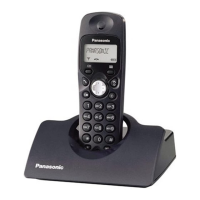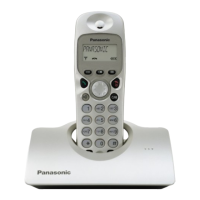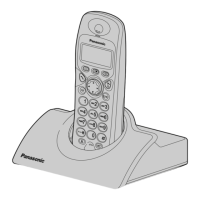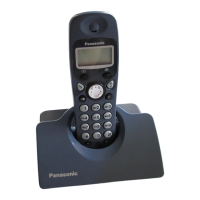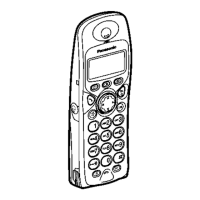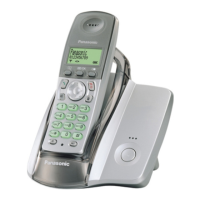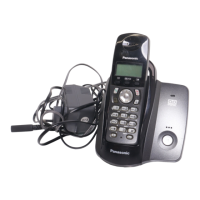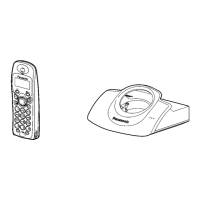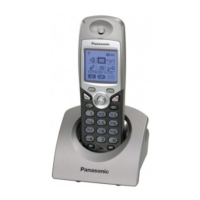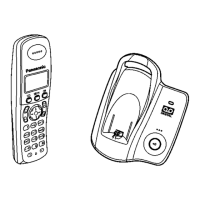20.4. Transmitter/Receiver
Base Unit and Handset mainly consist of RF Module and DECT BBIC.
Base Unit and Handset transmit/receive voice signal and data signal through the antenna on
carrier frequency.
Signal Pass:
*Refer to SIGNAL ROUTE ().
20.4.1. Transmitter Block
The voice signal input from the TEL LINE interface goes to RF Module (IC3) through DECT BBIC
(IC2) as shown in BLOCK DIAGRAM (BASE UNIT) ()
The voice signal passes through the analog part of IC2 where it is amplified and converted to a
digital audio stream signal. The burst switch controller processes this stream performing
encryption and scrambling, adding the various other fields to produce the GAP (Generic Access
Profile) standard DECT frame, assigning to a time slot and channel etc.
In IC3, the carrier frequency is changing, and frequency modulated RF signal is generated and
amplified, and radiated from antenna. Handset detects the voice signal or data signal in the
circuit same as the following explanation of Receiver Block.
20.4.2. Receiver Block
The signal of 1.9 GHz band (1.881792 GHz ~ 1.897344 GHz) which is input from antenna is input
to IC3 as shown in BLOCK DIAGRAM (BASE UNIT) ().
In IC3, the signal of 1.9 GHz band is demoduleted, and goes to IC2 as GAP (Generic Access P
rofile) standard DECT frames. It passes through the decoding section burst switch controller
where it separates out the frame information and performs de-encryption and de-scrambling as
required. It then goes to the DSP section where it is turned back into analog audio. This is
amplified by the analog front end, and goes to the TEL LINE Interface.
20.5. Pulse Dialing
During pulse dialing the hookswitch (Q2,Q3) is used to generate the pulses using the HOOK
control signal, which is set high during pulses. To force the line impedance low during the
"pause" intervals between dial pulses, the PULSE_DIAL signal turns on Q7.
21. BLOCK DIAGRAM (HANDSET)
22. CIRCUIT OPERATION (HANDSET)
22.1. Outline
53
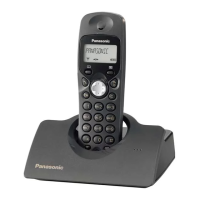
